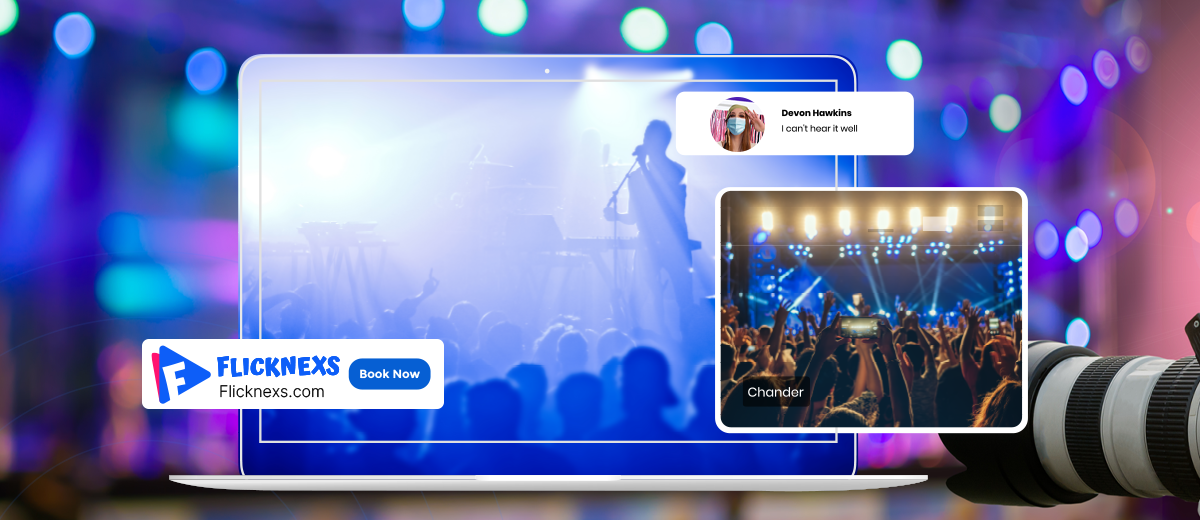Introduction
Live event streaming services have gained significant popularity in recent years due to their ability to connect people globally in real time. These services offer a wide range of benefits, from expanding audience reach to enabling data collection and analysis. In this article, we will explore the rise of live event streaming services and delve into the advantages they bring.
The Rise of Live Event Streaming Services
live streaming services refer to online platforms that facilitate the live broadcasting of events to a worldwide audience through tlivingnettet. These services have experienced steady growth, with the global market projected to reach $184.3 billion by 2027. This expansion is driven by the increasing demand for real-time engagement, particularly for events that are inaccessible for in-person attendance. Prominent live event streaming services include Flicknexs, Webnexs, YouTube Live, Facebook Live, Twitch, and Periscope. These platforms enable users to stream live events, ranging from concerts to sports competitions to viewers across the globe. As the demand for live event streaming services continues to soar, we anticipate the entry of more platforms into the market.
Benefits of Live Event Streaming Services
Increased Audience Reach
One of the key advantages of utilizing live event streaming services is the capacity to extend your audience on a greater scale. In conventional events, the number of individuals who can participate in person is restricted. However, by embracing live streaming, individuals from around the globe can effortlessly tune in and witness the event as it unfolds utility time.
This amplified reach to the audience can prove advantageous for businesses, as it allows them to connect with a worldwide audience and enhance their brand recognition. Additionally, it enables organizations to engage individuals who may be unable to attend the event in person, particularly those residing in different countries.
Increased Engagement in Live Event Streaming Services
Another advantage of utilizing live event streaming services is its heightened engagement level. Live streaming creates a dynamic environment where viewers can actively participate, fostering a sense of connection with the event and its participants. This heightened engagement not only enhances the viewer’s overall experience but also cultivates stronger brand loyalty and customer retention.
Moreover, live streaming empowers viewers to provide real-time feedback and pose questions during the event, presenting valuable opportunities for businesses to refine their offerings. This feedback can be leveraged to improve products and services, as well as enhance future events, creating a more captivating and interactive experience for prospective viewers.
Increased ROI
Live event streaming services can offer a substantial return on investment (ROI) for businesses. By leveraging the power of live broadcasts, businesses can expand their reach to a wider audience, leading to potential boosts in sales and revenue. Furthermore, opting for live streaming allows businesses to minimize expenses related to conventional events, such as venue rentals, travel expenses, and accommodations.
In addition to cost savings, live event streaming services provide opportunities for monetization through advertising and sponsorships. This creates an additional revenue stream for businesses, which can be particularly advantageous for those operating on limited budgets and unable to host physical events.
Data Collection and Analysis
Lastly, live event streaming services offer businesses invaluable opportunities for data collection and analysis. Through the tracking of viewer engagement and behavior, businesses can acquire valuable insights into their target audience, enabling them to refine their marketing strategies with precision. This data-driven approach allows businesses to tailor their content and format, ensuring a more personalized and engaging experience for the audience.
The gathered data also serves as a foundation for enhancing future events. By understanding the audience’s interests and preferences, businesses can make informed decisions regarding the event’s content, structure, and delivery, ultimately maximizing its impact and resonance.
Types of Live Event Streaming Services
There are various types of live event streaming services available, each catering to different needs and preferences. These include:
Live Streaming Platforms
Live streaming platforms are online services that facilitate the streaming of live video content to a wide audience. Popular examples of such platforms include Flicknexs Livestream, Webnexs Live, YouTube, and Twitch.
Social Media Live Streaming
Social media platforms also provide the option for users to broadcast live video content directly from their social media accounts. Facebook, Instagram, and Twitter are notable platforms that offer this feature.
Webcasting Platforms
Webcasting platforms offer more advanced features compared to basic live-streaming platforms. They include multiple camera angles, on-demand viewing, and interactive elements like Q&A sessions. Prominent examples of webcasting platforms are Livestream and Vimeo Live.
Dedicated Live Streaming Solutions Dedicated live streaming solutions cater to businesses that require greater control and customization options for their live events. These solutions offer advanced features tailored to specific needs. Examples of such platforms include Flicknexs Livestream, Webnexs Live, and IBM Cloud Video.
How Live Event Streaming Services Work
Live event streaming services necessitate specific equipment and software for optimal functionality. These include:
Equipment Required for Live Streaming:
- Camera or Cameras
- Microphones and Audio Equipment
- Tripod or Stabilizer
- Lighting Equipment (if necessary)
Live Streaming Software
The live streaming software is essential for encoding and streaming video content to the live event streaming service. Popular options include Flicknexs Livestream, Webnexs Live, OBS Studio, and Wirecast.
Setting Up a Live Stream
To set up a live stream, users must first create an account on their preferred live event streaming service. Then, they must connect their live streaming software to the service and configure the stream settings.
Testing and Troubleshooting
Before the event, it is crucial to conduct thorough testing of the live stream and address any potential issues. This involves testing the equipment and software, ensuring a stable internet connection, and running a test stream to verify proper functionality.
Choosing the Right Live Event Streaming Services:
When selecting a live event streaming service, consider the following factors:
Quality of Service
Opts for a live streaming service that delivers a stable, high-quality stream.
Features
Look for features like live chat, analytics, and embedding capabilities on your website.
Support
Choose a live streaming service that provides reliable customer support for technical assistance.
Compatibility
Ensure that the live streaming service is compatible with your desired devices and software.
Security
Select a live streaming service that offers secure streaming and content protection.
Comparison of Popular Live Streaming Services: Here is a brief overview of some popular live streaming services:
Flicknexs
Offers multi-camera support, real-time analytics, customizable branding, and mobile compatibility.
Webnexs
Provides screen sharing, real-time chat, customizable branding, mobile compatibility, recording and playback, live polling, and registration and ticketing.
Twitch
Originally focused on gaming, Twitch has expanded to include various content types. It offers monetization options, chat functionality, and mobile broadcasting.
Vimeo Livestream
A dedicated platform with advanced features like analytics, password protection, and custom branding, suitable for professional-grade live streams.
Cost Considerations
Live streaming services vary in pricing models, so it’s important to choose one that aligns with your budget. Some services offer free plans with limited features, while others require monthly subscriptions. Certain services charge based on the number of viewers or data transmitted. Consider the value the service brings to your obvious cost.
Best Practices for Live Event Streaming Services:
To ensure a successful live stream, follow these best practices:
Pre-Event Planning:
- Choose the right streaming service for your needs.
- Test all equipment to avoid technical issues.
- Have a backup plan in case of any unforeseen circumstances.
- Promote your event using social media and other marketing tools.
Live Streaming During the Event:
- Start the live stream on time to retain viewers.
- Engage with the audience through questions and feedback.
- Maintain high-quality visuals and audio.
- Keep the presentation simple and focused.
Post-Event Activities:
- Send a thank-you message to viewers.
- Share the recorded stream on various platforms.
- Gather feedback for future improvements.
- Analyze metrics like viewership, engagement, conversion rates, and ROI.
Measuring Success and ROI
To evaluate the success of your live stream, track metrics such as the number of viewers, engagement versions immersions abandoned, and calculate the ROI based on the costs incurred and revenue generated.
Conclusion
Live event streaming services offer numerous advantages for businesses and organizations seeking to expand their audience reach, engagement, and ROI. By selecting the right service, meticulous planning and execution, and monitoring success metrics, businesses can effectively leverage live event streaming to enhance their marketing and communication strategies. Stay informed about emerging trends and best practices in this rapidly evolving industry to stay ahead of the curve and achieve your goals.



Leave a Reply